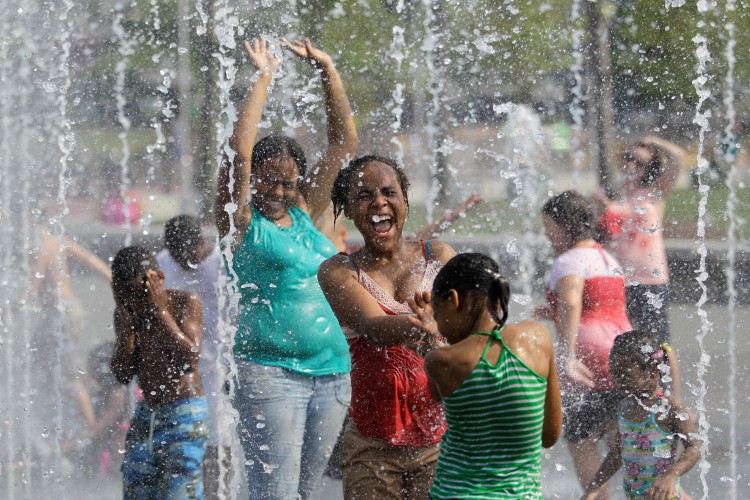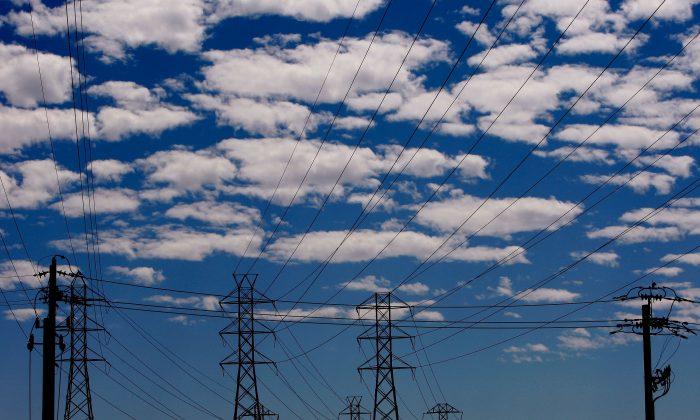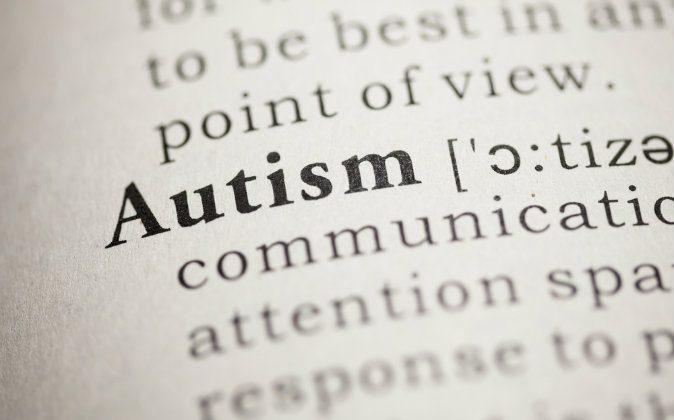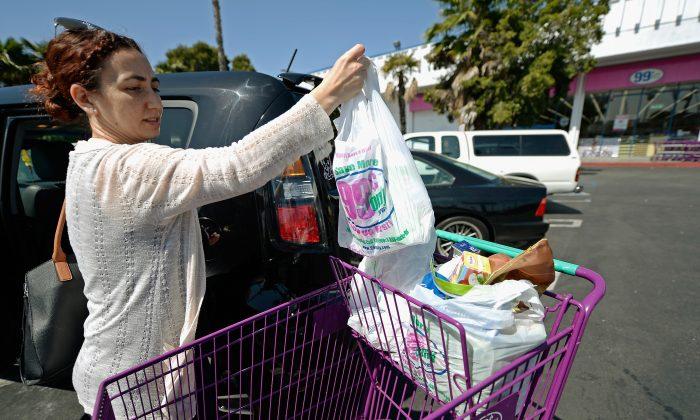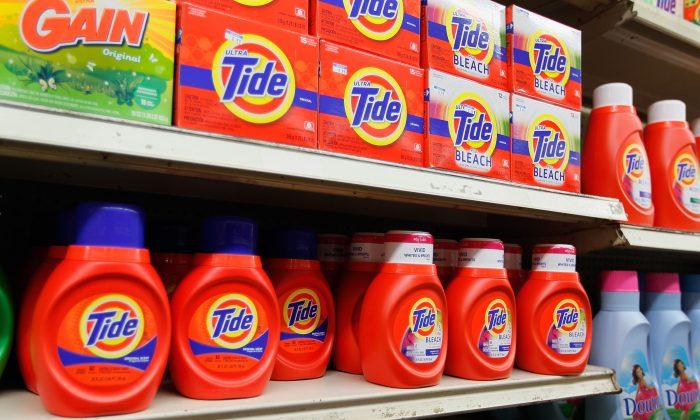The dangerous heat wave continues across the central and southern Plains and the Ohio Valley. The National Weather Service (NWS) reported, “Records were set on Friday in Newark, N.J. (108 F); Dulles, Va. (105 F); and Bridgeport, Conn. (103 F) tied its own record.” Conditions should improve for the East Coast by early this week.
Heat warnings and advisories are in effect from Nebraska, Kansas, Oklahoma, and northern Texas eastward into Ohio and Kentucky, as well as along the East Coast from Georgia to Maine. According to the (NWS), heat index values will range from 105 to 115 and higher from Friday for Boston to New York, Philadelphia, Washington, and Richmond affecting millions of people. The service said heat indexes were above 100 throughout the center of the country into the East.
According to an e-mail from the Environmental Protection Agency (EPA) heat waves can be amplified by the “urban heat island” effect, in which cities are hotter than surrounding natural areas. Pavement, buildings, and other infrastructure contribute to higher urban temperatures in a number of ways. Heat islands are also influenced by a city’s geography and weather conditions. For example, strong winds and rain can flush hot, stagnant air from city centers, while sunny, windless conditions can exacerbate heat islands. Summertime heat islands increase energy demand for air conditioning, raising power plant emissions of harmful pollutants.
Higher temperatures accelerate the chemical reaction that produces ground-level ozone, or smog. This increased air pollution threatens public health and the environment. Ozone is bad for anyone but especially bad for anyone with lung disease. Those with asthma, bronchitis, and emphysema should reduce their outdoor exertion when ozone levels are high. There is an app for that: the Air Quality Index (AQI) is free for iPhone and Android. The EPA also offers e-mail alerts for air quality, through www.enviroflash.info. The agency does not seem to have an 800 number for less wired citizen.
Several groups are especially vulnerable to poor air quality and to being harmed by excess heat.
For example, the government of the District of Columbia Homeland Security and Emergency Management Agency issued a heat advisory and announced that the D.C. Department of Mental Health (DMH) is distributing hyperthermia information to community mental health providers and has posted health precautions on its website dmh.dc.gov. DMH staff visited all 115 certified residential facilities for mentally ill patients to gauge preparations for the heat. Representatives from DMH checked about 50 facilities and directed five to fix air conditioning. Each facility operator must submit a relocation plan for its residents in the event of loss of air conditioning or power.
“The elderly, the very young, and people with mental illness and chronic diseases are at highest risk. Even young and healthy individuals can die from heat if they participate in strenuous physical activities during hot weather. Infants and children up to the age of 4 are sensitive to high temperature effects and depend on others to provide adequate liquids,” wrote Matthew Murphy of the U.S. Public Health Service—National Center for Environmental Health—Centers for Disease Control and Prevention, in an e-mail sent to Epoch Times by Federico Feldstein, health communication specialist from the National Center for Environmental Health (NCEH).
According to Murphy, “People over 65 years of age may not compensate for heat stress efficiently and are less likely to sense and safely respond to changes in temperature. People who overexert during work or exercise may become dehydrated and susceptible to heat sickness. People who are physically ill, especially with heart disease or high blood pressure, or who take certain medications for depression, insomnia, or poor circulation, may also be affected by extreme heat. People who are overweight may be prone to heat sickness because of their tendency to retain more body heat.”
The Red Cross provides support to communities facing dangerous heat, just as it helps after tornadoes, floods, and ice storms. “Every chapter is different, some serving first responders and others will go out to provide canteen functions,” said Anne Marie Borrego, a spokesperson for the American Red Cross in a telephone interview.
She said she recommends that people “call the local Red Cross Chapter to locate cooling centers or look to redcross.org/heatsafety. The Red Cross runs and monitors these on a community basis.”
Because the health effects of high heat are cumulative, the risk of heat related illness increases as the heat wave continues. If designated cooling centers are not available, try to find other air-conditioned buildings to help stay cool.
Heat warnings and advisories are in effect from Nebraska, Kansas, Oklahoma, and northern Texas eastward into Ohio and Kentucky, as well as along the East Coast from Georgia to Maine. According to the (NWS), heat index values will range from 105 to 115 and higher from Friday for Boston to New York, Philadelphia, Washington, and Richmond affecting millions of people. The service said heat indexes were above 100 throughout the center of the country into the East.
According to an e-mail from the Environmental Protection Agency (EPA) heat waves can be amplified by the “urban heat island” effect, in which cities are hotter than surrounding natural areas. Pavement, buildings, and other infrastructure contribute to higher urban temperatures in a number of ways. Heat islands are also influenced by a city’s geography and weather conditions. For example, strong winds and rain can flush hot, stagnant air from city centers, while sunny, windless conditions can exacerbate heat islands. Summertime heat islands increase energy demand for air conditioning, raising power plant emissions of harmful pollutants.
Higher temperatures accelerate the chemical reaction that produces ground-level ozone, or smog. This increased air pollution threatens public health and the environment. Ozone is bad for anyone but especially bad for anyone with lung disease. Those with asthma, bronchitis, and emphysema should reduce their outdoor exertion when ozone levels are high. There is an app for that: the Air Quality Index (AQI) is free for iPhone and Android. The EPA also offers e-mail alerts for air quality, through www.enviroflash.info. The agency does not seem to have an 800 number for less wired citizen.
Several groups are especially vulnerable to poor air quality and to being harmed by excess heat.
For example, the government of the District of Columbia Homeland Security and Emergency Management Agency issued a heat advisory and announced that the D.C. Department of Mental Health (DMH) is distributing hyperthermia information to community mental health providers and has posted health precautions on its website dmh.dc.gov. DMH staff visited all 115 certified residential facilities for mentally ill patients to gauge preparations for the heat. Representatives from DMH checked about 50 facilities and directed five to fix air conditioning. Each facility operator must submit a relocation plan for its residents in the event of loss of air conditioning or power.
“The elderly, the very young, and people with mental illness and chronic diseases are at highest risk. Even young and healthy individuals can die from heat if they participate in strenuous physical activities during hot weather. Infants and children up to the age of 4 are sensitive to high temperature effects and depend on others to provide adequate liquids,” wrote Matthew Murphy of the U.S. Public Health Service—National Center for Environmental Health—Centers for Disease Control and Prevention, in an e-mail sent to Epoch Times by Federico Feldstein, health communication specialist from the National Center for Environmental Health (NCEH).
According to Murphy, “People over 65 years of age may not compensate for heat stress efficiently and are less likely to sense and safely respond to changes in temperature. People who overexert during work or exercise may become dehydrated and susceptible to heat sickness. People who are physically ill, especially with heart disease or high blood pressure, or who take certain medications for depression, insomnia, or poor circulation, may also be affected by extreme heat. People who are overweight may be prone to heat sickness because of their tendency to retain more body heat.”
The Red Cross provides support to communities facing dangerous heat, just as it helps after tornadoes, floods, and ice storms. “Every chapter is different, some serving first responders and others will go out to provide canteen functions,” said Anne Marie Borrego, a spokesperson for the American Red Cross in a telephone interview.
She said she recommends that people “call the local Red Cross Chapter to locate cooling centers or look to redcross.org/heatsafety. The Red Cross runs and monitors these on a community basis.”
Because the health effects of high heat are cumulative, the risk of heat related illness increases as the heat wave continues. If designated cooling centers are not available, try to find other air-conditioned buildings to help stay cool.

